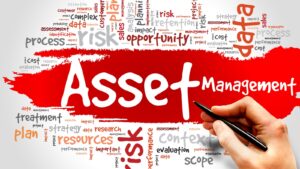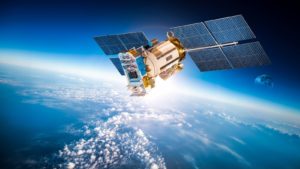Water infrastructure renewal and improvement is a never-ending endeavour. A utility may benefit from asset management to make the most of its funds for both capital and operations and maintenance.
Utility managers and decision-makers receive crucial information from asset management regarding capital assets and the timing of investments. Inventorying critical assets, assessing their performance and health, creating maintenance, repair, and replacement plans, and funding these initiatives are all crucial components of asset management. Asset management is a process that may be used in any system and is scalable.
Asset management entails developing a long-term strategy to protect these infrastructures and the services they provide, whether it be a modest water system serving a sizable population or the water infrastructure of the world’s biggest cities.
This article will look into the top 5 most frequently asked questions by water asset managers, and give the most competitive solutions to overcome water asset challenges.
Top 5 FAQs by Water Asset Managers
#1 FAQ: How to efficiently maintain ageing asset infrastructure?
- Embeddable Concrete Sensors: These are installed as a foundation is being poured to track the right concrete’s maturation and strength.
- Seismic sensors: Find out whether there are earth tremors and how they might affect structures. With the use of this technology, building owners and contractors may determine whether their structures are in danger from nearby ones and vice versa.
- Environmental sensors: Track the temperature and humidity that the structure has experienced in its immediate environment.
#2 FAQ: How do you manage asset costs amid rising electricity prices?
With the rising use of renewable energy in production, decreased carbon emissions, efficient energy consumption, increased productivity, and cost savings on an unprecedented scale, these new cutting-edge technologies offer these benefits and more. Industry 4.0 technology can improve renewable generation systems known as “Distributed Energy Resources” to enable demand response actions like automatic load shifting based on weather and spot pricing. The difficulties of integrating renewable energy sources into small and big power networks, which call for novel methods of grid management, may be overcome through digital technologies. To fulfil the various electricity needs of end users, smart grids, for instance, make use of the capabilities of information and communication technologies to efficiently monitor and manage the generation, delivery, and consumption of electricity from various, possibly dispersed sources of energy. These systems might offer the adaptability required to incorporate renewable energy sources like wind and solar into the power grid.
The development of renewable energy resources can lower the cost of renewable energy technology, address the issues associated with rising energy demand, as well as fulfil national energy mix diversification and energy import dependency goals for governments.
#3 FAQ: How do you keep up with the increased demand for services given the significant population growth?
Meeting demand is the first and most obvious challenge of urbanisation. The second is preserving water quality and reducing environmental danger brought on by urban sprawl. Services in rural and remote areas are nevertheless expensive as a result of depopulation, asset distribution, and resource demands. The industry must essentially work harder with less.
Incorporating industry 4.0 technology, which may enhance supply chain management and customer service, is the urban solution. Water resources will be tracked in real-time, projected, and consistently available thanks to demand management systems that can combine site/asset data and other data sets. Customers’ experiences are being improved through intelligent water metering, which also increases customer visibility into their usage. Industry 4.0 technologies improve renewable energy production systems to enable data-driven demand response activities.
Drones and remote monitoring through IoT are the rural solutions, and they will significantly enhance remote and rural water services. Remote monitoring eliminates the need for on-site visits, allowing for more affordable asset management and maintenance.
#4 FAQ: How do you keep up with the lack of human resources?
The demand for some labour categories will decline as a result of AI and other Industry 4.0 technologies. For instance, sensor technology will do away with the requirement for human labour to physically inspect each system of water canals to look for deterioration or do routine check-ups. Water asset managers will be able to monitor and maintain all water system assets, including filtration tanks, pipe networks, pumps, motors, and enormous infrastructures, under a single glass pane with the use of IIoT-powered smart sensor systems and integrated SCADA systems. Similar to this, asset managers may use digital twin technology to unlock additional value from present assets by having access to this data, eliminating unanticipated downtime, and reducing operational expenses while operating at peak performance. Using real-time data to discover new defects that result in increased emissions being discharged into the environment, managers can continuously update models based on these flaws. Planning for the workforce will be crucial, with an emphasis on employing and training the young as well as upskilling the current workforce. Three areas should be prioritised: providing maintainers and operators with digital literacy abilities, particularly with mobile technologies; giving current SCADA training; and upgrading domain experts in data analysis.
#5 FAQ: How do you manage water assets in an environmentally-sustainable way?
Among the many environmental issues the water sector must deal with are urbanisation, sewer leakage concerns, flooding, sustainable energy supply, and climate change. If not properly managed, urban sprawl and growing populations can raise the risk of stormwater runoff pollution. Managing sewer obstructions and associated spills that occur in the main system is another significant difficulty for this business. Hours or even days after the initial spill, the public frequently provides the first report of the incident. Impacts on the environment, public health, and the cost of cleanup efforts may all be exacerbated by this.
The IoT is enabling utilities to monitor previously unmonitored water facilities in real-time more easily and affordably to address these issues. With this visibility, utilities are better equipped to respond promptly to spills, leaks, or overflows and even stop them from happening in the first place. Additionally, this capacity offers data on a greater number of assets than was previously available, which can be included in Water Sensitive Urban Design (WSUD) projects to reduce the possibility of stormwater pollution and the resulting environmental effect. With the IoT, utilities can monitor more water assets and previously unmonitored water sites for less money.
Have All the Answers to Your Water Asset Problems in Your Fingertips
The water industry is becoming increasingly difficult to handle amongst climate change, the increase in population, and rising energy costs. Water asset managers will undoubtedly find it difficult to manage all their water networks to ensure there is enough water supply of high quality for everyone. However, with technologies such as IIoT, AI, ML, Digital Twin Models, visual and data analytics, predictive technology and other innovative technologies, water asset managers are able to put their concerns and struggles to rest. These cutting-edge technologies not only increase the efficiency of water supply but also accelerates water infrastructure to be capable of much more. Welcome to industry 4.0.







